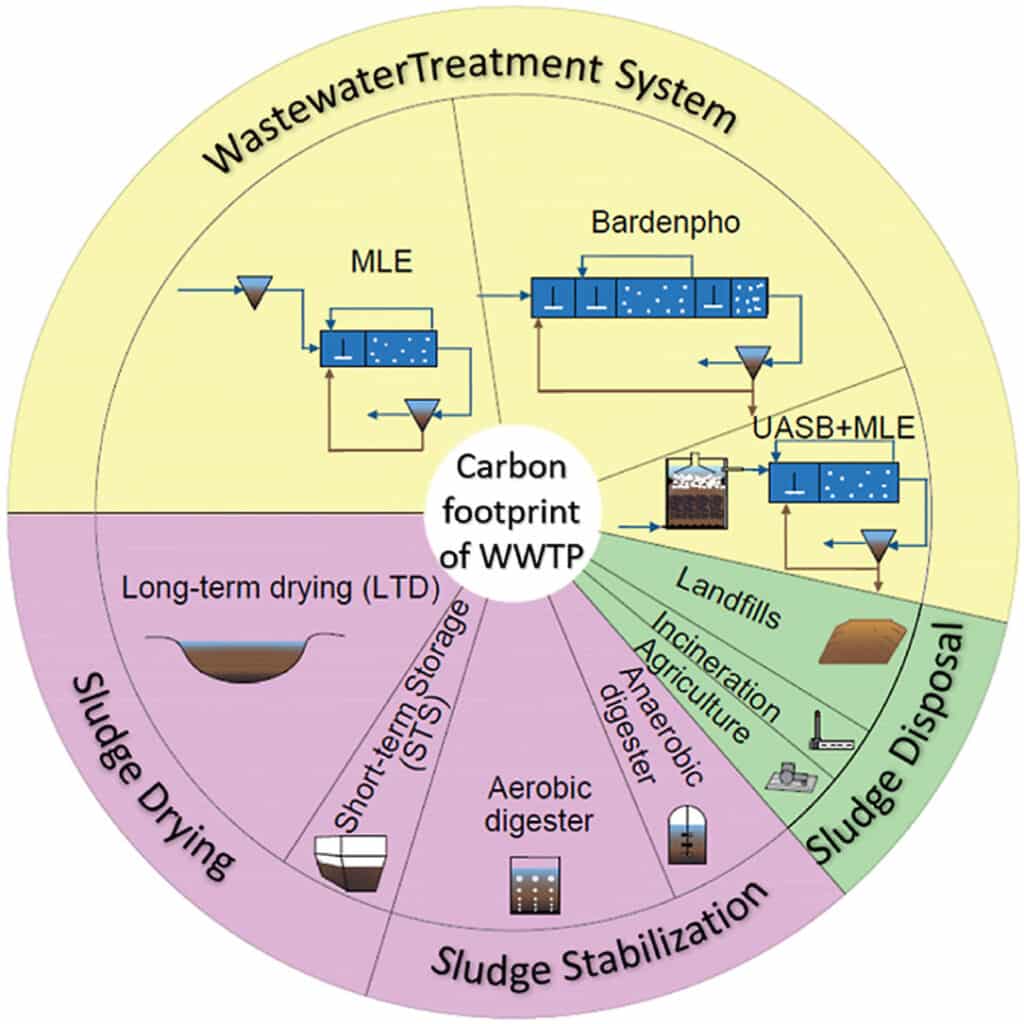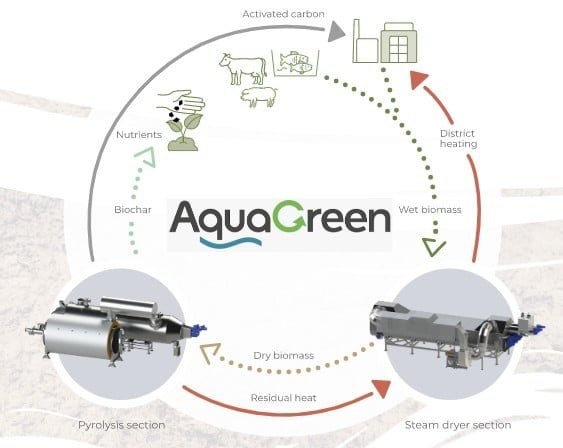To bring its groundbreaking biomass treatment technology to the global market, AquaGreen, a Danish engineering company, received $4.4 million from Nordic Alpha Partners and Swedish FMG Circular Invest.
FMG Circular Invest is a joint investment initiative between Feralco Group and its owner Mellby Gård. The Danish Workers Pension Fund (ATP) also supports AquaGreen.
The company’s revolutionary technology helps in the fight to reduce emissions while paving the way for a circular economy.
AquaGreen: Pioneering the Circular Economy with Innovative Technology
AquaGreen is at the forefront of the circular economy through its patented technology that transforms biowastes into resources. This innovative technology enables industries to turn biomass and waste like sewage sludge into renewable energy, biochar, and activated carbon.
The company’s engineers are working closely with scientists and professors from renowned universities, and dedicated partners. Its state-of-the-art technology is patented with the Technical University of Denmark (DTU) and earned the company various innovation awards.
Noting AquaGreen’s unique solution, co-CEO of Feralco Group Ludovic Huitorel, remarked that:
“The trends related to the circular economy within wastewater treatment are strong… AquaGreen is well-positioned to meet the market’s demand for the elimination of microplastics and medical residues, in wet biomasses.”
An average person discharges around 2 tons of biowaste (or poop) a year. Wastewater treatment facilities either spread the waste on farmlands, store it, or burn it. These options are expensive and are bad for the environment and the climate.
Carbon Footprint of WWTPs

During their operations, wastewater treatment plants (WWTPs) generate greenhouse gasses like carbon dioxide, methane, and nitrous oxide, including CO2 emissions from the energy production required to run these plants. These gasses are known to exacerbate climate change.
AquaGreen offers a solution to this escalating issue. Its innovative technology eliminates harmful substances in biomass and lowers greenhouse gas emissions.
How Does AquaGreen Biomass Technology Work?
AquaGreen’s biomass treatment technology is a game-changer in waste management. Their continuous, fully automated process (integrated steam-drying and pyrolysis) uses the calorific content of waste to fuel its own system.
This software-controlled system reduces waste management costs by up to 90% as it requires little manpower for operation. Plus, monitoring the system is possible remotely.
The process not only turns wastes into valuable resources but also eliminates harmful pollutants, cuts GHG emissions, and stores CO₂ in biochar. This significantly contributes to environmental sustainability and climate change mitigation efforts, while generating revenue from waste.
Here’s how AquaGreen’s technology works, explained in the video.
Impact on Climate and the Environment
AquaGreen’s innovative HECLA® technology runs with an integrated steam dryer and pyrolysis system. Sewage sludge is steam-dried and the remaining biomass is then pyrolyzed in the absence of oxygen at 650°C.
The technology converts biomass into biochar, which reduces or eliminates the environmentally harmful substances. During this process, essential nutrients and minerals for plants and animals like phosphorus are preserved.
The process also significantly reduces CO₂ emissions. First, it prevents the sludge from dissolving and releasing planet-warming greenhouse gasses. Second, it binds CO₂ into the biochar.
The system is self-sufficient and circular because the gasses produced during pyrolysis fuels both the steam drying and pyrolysis processes. The excess steam, condensed into hot water, is applicable for district heating grids and other applications.
With just one AquaGreen HECLA® Setores 1,000 Plant, it can handle the waste from up to 75,000 individuals. More remarkably, the plant is capable of achieving these climate-friendly results:
- Reduce GHG emissions by 1,800 tons of CO₂ equivalent
- Produce 2,000 MWh of energy
- Store 500 tons of carbon in biochar
The resulting biochar is odorless and contains up to 6% plant-accessible phosphorus and other valuable nutrients.
From Sludge to Biochar to Carbon Credits
Through AquaGreen’s HECLA® technology, sewage sludge can be converted into biochar, which is a stable and effective carbon sequestration method. Biochar produced at temperatures above 600°C has a high stable carbon content of above 90%.
Studies also show that biochar can sequester up to 2-3 tons of carbon per ton of biochar applied.
This method offers a long-term mitigation as it can sequester carbon up to thousands of years when added to soil. Plus, it can also improve soil quality by enhancing water retention, nutrient availability, and microbial activity.
Companies or projects that sequester carbon and reduce GHG emissions through biochar are eligible to earn carbon credits. These credits are tradable in the carbon markets and represent certain amounts of carbon removed from the atmosphere. Each credit corresponds to a tonne of atmospheric carbon removed or reduced.
AquaGreen’s HECLA® technology has shown its capability in providing sustainable wastewater management as well as reducing GHG emissions.
The EU alone would need around 5,000 HECLA® plants to address its wastewater treatment requirements. This fact, plus the climate benefits of its technology, is the reason for AquaGreen’s new investment.
With AquaGreen’s innovative biomass treatment technology, waste management takes a leap towards sustainability and climate action. By converting biowastes into valuable resources while sequestering carbon through biochar, the company contributes to climate change mitigation.

